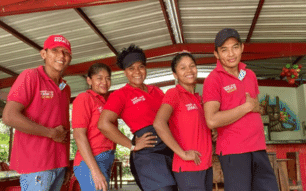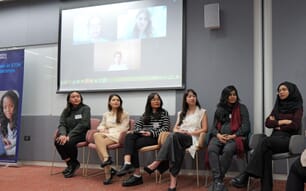
The seafood supply chain has been a key focus for Sadusky throughout her career
Can you briefly describe your aquaculture career?
My first job right out of college was in the media – I was a journalist for a local news station in Chicago. I was passionate about sustainability, but the stories I could write about the topic were few and far between. I realised that instead of working on the daily news and writing the occasional sustainability feature, I wanted to work on solutions. I decided to go back to school at the University of Miami and study marine science. From there, I took the fisheries route and started focusing on policy and conservation of highly migratory species. I figured that was where we could collectively work and actually achieve sustainable seafood.
Fisheries management at the international level can be slow. Marine species don’t respect state or international boundaries – you have to work at a global level to manage fish stocks. Developing and implementing international policy is challenging as well. It soon dawned on me that consumers are using their dollars to vote for sustainable seafood at the grocery store every day. I could possibly have an impact by reaching them. I decided to enter the seafood world and got a sales and marketing job with a Chilean salmon producer. It was the ultimate crash course in the global seafood supply chain – immense and convoluted, yet fascinating.
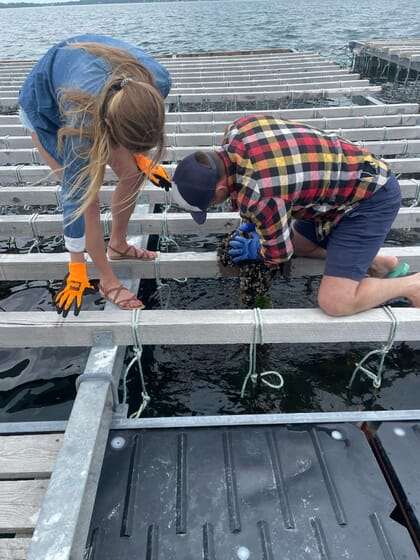
Sadusky took at job at Maine Sea Grant and got hands-on experience with aquaculture producers
After that experience, I wanted to work more hands-on with aquaculture. I took a job in Maine as a Sea Grant extension agent supporting sea farmers across the state. Maine has some incredible seafood and we’re seeing a lot of exciting developments with aquaculture; but I also became aware of the importance of scale. We were producing all this wonderful, delicious and sustainable seafood, but not much of it moved beyond the state of Maine. The story was often lost, either falling down the list of priorities for distribution or the sales channels weren’t there or there simply wasn’t any marketing. It’s important to engage seafood buyers in the full supply chain, and tell the story of aquaculture from the production level. Now that I’m working with Sustainable Fisheries Partnership, I’m able to have an impact with major seafood buyers and their sourcing decisions.
Can you describe your current role?
I’m the partnership programme director for North America at the Sustainable Fisheries Partnership (SFP). I work to support retailers across North America who buy immense volumes of seafood and help them improve their sourcing practices and leverage their purchasing power to make positive changes in the supply chain. The role marries the production side of aquaculture with the market side – and gets us closer to producing more sustainable seafood.
The Sustainable Fisheries Partnership got its start with wild-caught seafood and has deep expertise in fisheries, but the organisation is moving more and more into the aquaculture space, which is why I was brought on. We are now working on an aquaculture toolkit to assist partners specifically with traceability and transparency in their aquaculture seafood sourcing.
I’m working with major retailers like Wal Mart, US Foods, Disney and Thai Union every day to help them follow through on their sustainability policies and pledges. In most cases, the first step is learning where their seafood is coming from. To generate this information, SFP offers our partners Seafood Metrics. The system allows SFP to track seafood sourcing data from different global suppliers and provides information on everything from the species, farm location, production method, harvest volume and any potential certifications. I also work on SFP’s Aquaculture Improvement Projects (AIPs) and give our partners opportunities to engage within their own aquaculture supply chain.
A big part of my role involves bringing ideas and suggestions to these companies on where they can have the most impact with improvements along the seafood supply chain. The information we have on seafood sourcing is fascinating – I always want to see how far down the value chain we can go.
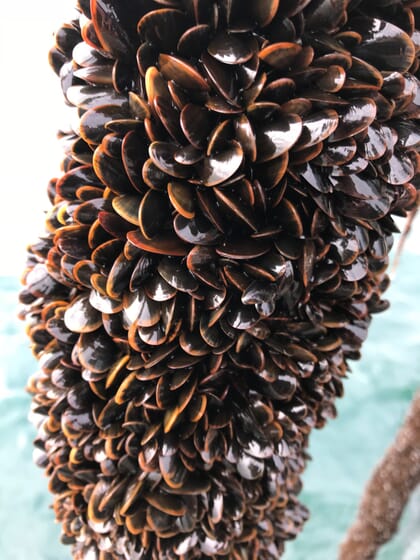
Sadusky is exploring ways to expand sustainable aquaculture production through seafood buyers’ demand © Offshore Shellfish
I am also researching the climate implications of aquaculture, which is a super exciting – albeit new – space. Here in Maine, where I’m based, we have oyster, mussel, scallop and seaweed farmers who are contributing to sustainable seafood production while also performing an ecosystem service. These crops filter the water, absorb excess nutrients and provide habitat for other organisms. At a large scale, these benefits could have immense cumulative impacts for the health of our oceans and our planet. I’m excited by that and I’m looking into how we can create and foster more of these benefits through existing aquaculture operations in different parts of the world.
What drew you to the aquaculture sector?
I think that aquaculture is an absolutely genius way of producing sustainable seafood. I grew up fishing, snorkelling and boating in South Florida and once I started learning about the pressure put on our oceans worldwide, I wanted to work on solutions. I had this vision of snorkelling as an old lady and seeing nothing, none of the sea life I knew as a kid – I wanted to help ensure we harvested seafood in a sustainable way. Aquaculture just seemed so smart, farming our aquatic foods just like we do with terrestrial plants and animals.
When I was in university, I spent a summer in Alaska working with the state’s salmon programme, and now recognise that internship as pivotal in directing my path to aquaculture. I saw that a sustainable aquaculture industry could enable fishermen to maintain their livelihoods and allow us to produce more seafood. The fact that the sector is an economic development tool for coastal communities and a sustainable development tool for inland and rural areas is an additional boon. The more I learned about it, the more I realised it had a lot of potential. We can produce sustainable protein without ruining the environment and live in harmony with the ocean.
Are there any particular species that you have enjoyed working with?
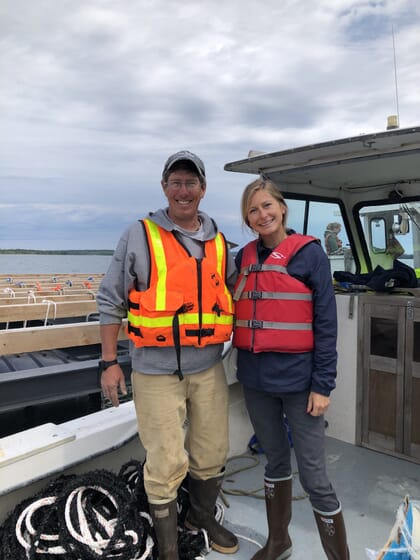
Sadusky and Bartlett worked on a project that introduced aquaculture to lobstermen in Maine's Downeast region
I got my start in Atlantic salmon, but I’m totally biased towards bivalves! Scallops are so charming – honestly, they’re beautiful and delicious. And the mussel definitely doesn’t get enough praise. They’re little filter-feeding powerhouses and the ultimate protein punch. Bivalves (two-shells) are incredibly sustainable – they literally improve the environment as you grow them. What could be better than regenerating the ecosystem while simultaneously producing delicious seafood? That’s the definition of living in harmony with nature.
I also have a thing for sea cucumbers. It’s the detritovore in the ecosystem, and it can be incorporated in IMTA systems and is a great bioremediator. I’m trying to get some farmers here in Maine to incorporate them, perhaps alongside the mussel farm my partner operates. He’s added kelp already and seen great benefits, but I want him to throw sea cucumbers under his mussel rafts.
Your career has taken you from Alaska to the Caribbean and to Hong Kong – have you noticed any regional differences in the seafood and aquaculture industries?
I’m constantly fascinated by the way local supply chains work in different locations. For instance, the salmon industry is super organised and vertically integrated: it’s a well-oiled machine that gets salmon into every restaurant and supermarket across the world. Whereas in the Caribbean, there are a lot of artisanal fishers who may sell their catch at a local market or serve it up at the family restaurant, often before the fish even hits ice.
One major difference I’ve seen between the industries comes down to traceability – it varies depending on which part of the world you’re working in and which species you’re working with. Salmon has a very clear supply chain: if it’s wild it’s from Alaska and if it’s Atlantic salmon then it’s farmed – and that can be traced to its country and farm of origin.
However, when I worked as a consultant for the Hong Kong Sustainable Seafood Coalition or for the Dutch government in Bonaire, it was hard to get accurate sourcing data and establish a traceability system. There was so much seafood being consumed and it seemed to come from every corner of the globe. The mahi mahi on your plate could be from Peru or Ecuador or Taiwan, but passed through multiple hands before it arrived in the ramen joint, sushi restaurant or corner seafood shop. The spiny lobster in the wet market could be wild caught from Indonesia or Vietnam, or it could have been ranched in the Philippines. The supply chain is so blurry and it’s difficult for the consumer to know that they’re buying and eating sustainable seafood. At SFP, we work with our partners to tackle this issue and are truly making strides in gathering the necessary data to work towards full seafood traceability.
What work-related achievements are you most proud of?
Looking back, I’m proud of what I’ve been able to learn at this stage of my career. I’ve seen the aquaculture industry from multiple angles and perspectives – it makes me more effective in whichever role I’m in. I know about the markets, about primary production, the research side of things and I’ve worked internationally as well.
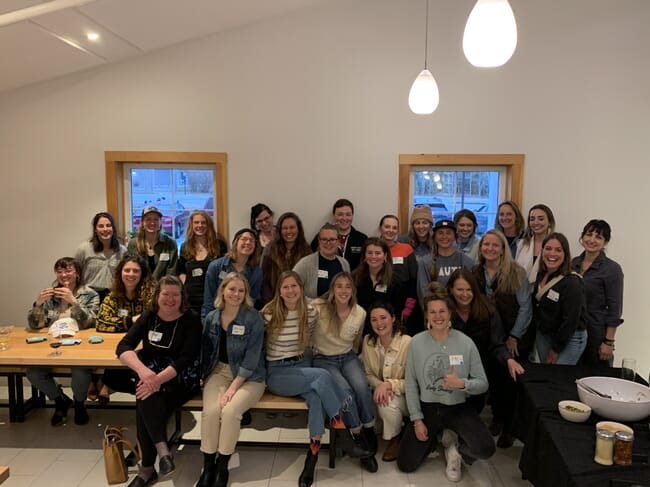
Sadusky played a key role in developing and delivering aquaculture trainings in Maine
The work I’ve done in Maine is a real stand-out for me. I took a hands-on extension job just before Covid-19 hit and then had to do it all remotely. Initially it was bizarre, but I learned how to help aquaculture farmers virtually. While I was at Maine Sea Grant, we developed virtual training programmes for new and existing sea farmers and created useful tools for the industry. We also ran multiple calls for proposals and distributed funds to help bolster the industry. Sea Grant also led the development of a 10-year roadmap for aquaculture in Maine. These are huge accomplishments on their own, regardless of all the Covid crazy.
What is your favourite part of working in aquaculture?
The people! If you work in aquaculture, it’s because you care about the planet and our future. I have yet to meet someone who’s in this industry for any other reason – whether it’s seaweed or salmon, oysters or shrimp, everybody wants to make a living doing right by the planet. Similarly, the variety of people in aquaculture is exciting, we come from all different backgrounds and have this common interest. Because of that, I’ve also found it to be a very welcoming sector. We know that we need people that have a range of expertise and different backgrounds. It makes the industry more fun.
What challenges have you encountered working in the sector?
The fact that there’s no clear career path is a challenge. I think this is partially because aquaculture is a relatively new field, you have to be comfortable forging your own path. This isn’t like accounting where you qualify, join a firm and have a well-defined trajectory. There are so many paths within the industry – which is great – but it can make things amorphous. It doesn’t surprise me that a lot of the people I meet stumbled into the space.
Aquaculture needs scientists, farmers and engineers – but it also needs artists and designers and techies. Because we have all of that need, it can be hard to see how you should enter the sector. Questions about whether you’re qualified and what route you should take are a big barrier to entering the space. It can be intimidating – you don’t “click into” this career path, you have to figure it out as you go.
Have you encountered (or heard of) any gender-related challenges in the sector?
Of course – I don’t think it’s any secret that aquaculture has historically been a male-dominated industry. In a lot of ways, it still is. In my previous position with Sea Grant, I ran an aquaculture training programme for new farmers. The instructors were mostly men – as were the students. I’ve also been on panels where I was the only woman on the stage. While it may not necessarily be a challenge, there are certain topics that women would like to discuss or that women may benefit from, that are not openly brought up in male-dominated settings.
The beauty of this, though, is that the women who are in aquaculture are banding together – just in the past two years, the number of women in aquaculture events has skyrocketed! There are now groups dedicated to women and minorities in aquaculture. The industry is also very welcoming and becoming more inclusive. It’s wonderful to witness and participate in this community building.

Though there isn't a set career path in aquaculture, Sadusky finds that the industry is welcoming to newcomers
Are there any individuals or organisations in aquaculture that you’ve found particularly inspirational?
I’ve been so lucky to find a community of marine-, seafood-, aqua-ladies in Maine, including farmers, researchers, shuckers, businesswomen and more. This group has really become a support network, to build ideas and share successes together, but also sympathise in the struggles of an industry that can be broad and tumultuous.
At the individual level, Fiona de Koning and Joanna Fogg are two exceptional women in aquaculture who everyone should meet! Joanna runs Bar Harbor Oyster Co, and Fiona is the matriarch behind Hollander & de Koning aquaculture.
As for organisations, I’ve really enjoyed getting to know the people behind Minorities in Aquaculture and am happy to call them friends.
What advice would you give to women who are considering joining the aquaculture sector?
We need you! If you are interested in aquaculture, you have a place – so come on in! As the industry continues to grow we need people with all types of skills and from all backgrounds. Not just scientists and engineers, but also artists and communicators, sales and finance professionals, welders and fishermen, veterinarians and software developers, innovators and creators.
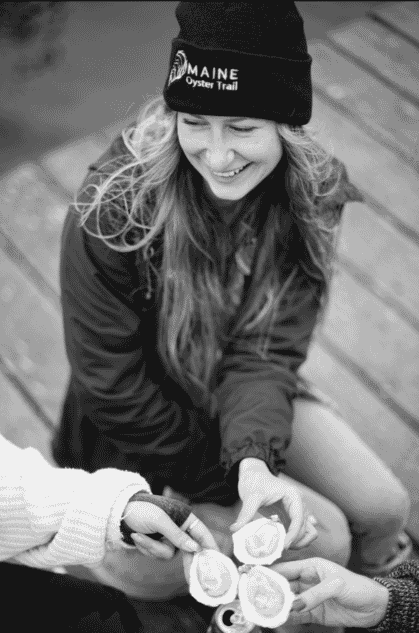
Sadusky wants to see aquaculture embraced the same way that local farming is
And it’s fun! There is so much opportunity in aquaculture right now,# as we discover the keys to growing new species, add technological solutions to farms and realise possible solutions for climate change and ecosystem services.
If you could solve one issue in the aquaculture industry, what would it be?
I’d want to tackle our messaging. As an industry, we can do a much better job communicating to the world – there are still a lot of misconceptions. Far too often, people are hearing or reading about the misconceptions instead of the industry’s progress and success. I’d like to shift that and tell the story of sustainable aquaculture, the farmers who are doing it right and the never-ending work to improve this sector – from feed, to farming practices, to plastic reduction. There is so much good in the story of aquaculture, and we need to help get that message to consumers.
If we can get ahead of the negative messaging, I think the industry will be able to make progress on social licencing and acceptance. Aquaculture often has to fight against the “not in my backyard” mentality and we need to engage with communities to improve the public’s perception of aquaculture. I want to see the industry embraced the same way that your local farm is. We all love our local farmers’ market and want access to local, sustainable and healthy food. Aquaculture is just that – only the aquatic version. We need to be proactive and engage the public so they know that aquaculture is useful, sustainable and wonderful.
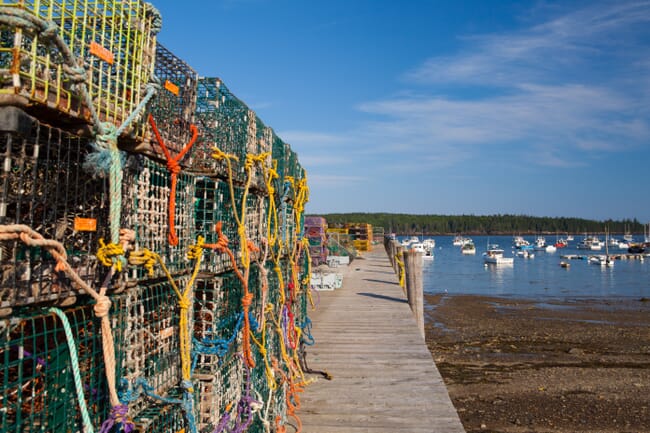
Sadusky's work in the aquaculture sector is just beginning
What would you like to be doing in 10 years’ time?
Ten years from now I’d like to have spent a decade assisting farmers all over the world to become the most sustainable seafood producer they can be; whether it’s oysters and mussels in cold climates or shrimp and fish in the tropics (plus seaweed, everywhere). I want to look back and know that I was able to participate in bolstering the industry and making it bigger and better.
Aquaculture holds so much potential for economic development of communities, for seafood and for healthy ecosystems – I’d like to help realise that. And perhaps, in 10 years, I’ll have a small seaweed snack shack or sea garden of my own. Or I’ll be teaching the virtues of aquaculture to new people. The opportunities are endless in this industry – I can’t wait to see where it will go.


